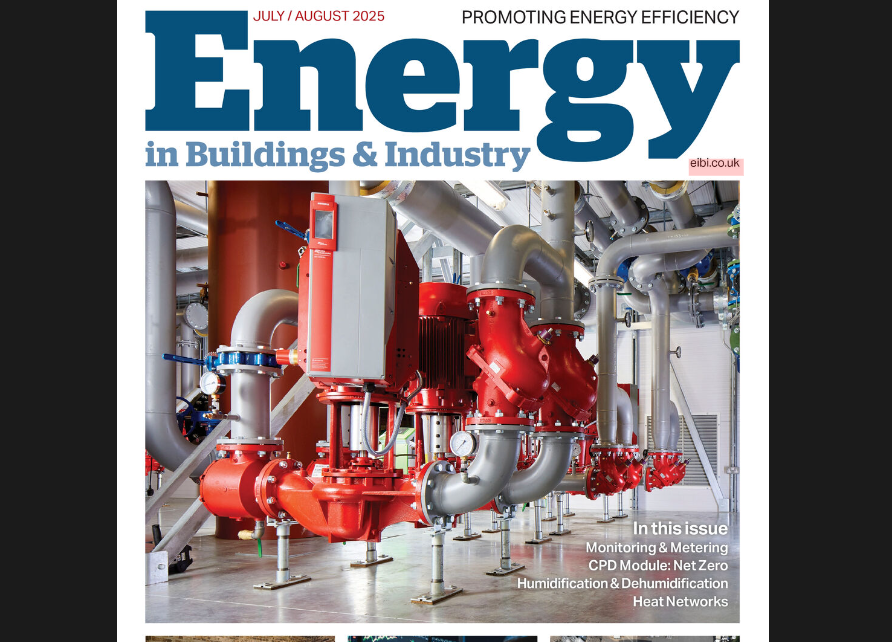We were delighted to have our views on Heat Network regulations and standards recently covered by a leading industry title. The full article is presented below
Heat networks: how next-generation regulations and standards will deliver for customers and the environment
Heat networks are a hot topic, not only as a result of new legislation, but as we’re seeing a step-change in functionality and efficiency. In this article, Louise Manfredi, CEO of Leep Utilities, talks about how Ofgem regulations and fifth-generation approaches are making heat networks a sound investment.
The UK government recently announced that Ofgem will take over regulation of heat network providers. It’s welcome news for heat network customers, who until now haven’t had statutory protection, and are often tied in to contracts they can’t influence or exit. Unlike gas and electricity, heat network customers can’t simply switch heat suppliers, and their costs are based on shared infrastructure that can’t be changed at an individual level.
Ofgem will start to regulate heat networks in January 2026, and its published requirements are pretty much as everyone expected. Providers will be required to deliver fair pricing and clearer billing, including notice of tariff changes, as well as ensuring they meet the technical standards needed for efficient and reliable services. Ofgem will also provide a formal dispute resolution service for customers and suppliers.
Some heat network providers do already meet these requirements, but for many this will mean a significant workload to bring systems and processes into alignment. Work on these systems needs to be advanced if providers want to be sure of meeting the 2026 deadline.
Overall, the new rules bring heat in line with the regulation of other energy sources, broadly speaking, and will provide a solid foundation for investment in a sector that will significantly expand over the next few decades.
Supporting the move to net zero
It’s easy to understand why heat networks are increasing in popularity and number. They are ideal for providing efficient, low-carbon heat, particularly in dense urban areas. Heat is generated centrally from a range of different sources and distributed through a pipe network to nearby properties.
With the UK on a firm path to net zero greenhouse gas emissions by 2050, heat networks offer an unrivalled opportunity to reduce the carbon associated with heating homes and businesses, as well as providing cost-effective energy solutions.
It’s estimated that 3% of heating systems in the UK are provided through heat networks currently, and that for the UK to reach its 2050 target this number will need to increase to around 18%.
The total investment expected across the sector between now and then will be somewhere in the region of £80bn, not only for building new heat networks, but to upgrade older heat networks to meet the latest technical specifications.
It’s time for a new generation
Today’s modern heat networks are a far cry from where they started, in London in the late 19th Century, when excess heat from the coal-fired Battersea power station generated steam that heated local homes through concrete ducts. The irony of this location is not lost on us, as Leep has been a utility partner for the redevelopment of Battersea power station over the last few years.
Every new generation of heat network since then has become increasingly efficient – operating at lower network temperatures, and integrating new and sustainable fuel sources, and waste incineration to recapture energy that would otherwise be lost.
Today, the UK has approximately 18,000 heat networks, many of which are legacy third-generation networks, built from the 1970s onwards in response to the oil crisis of the time. These networks are fuelled in the most part by centralised gas boilers – highly unsustainable – and heat the network to nearly 100ºC – unnecessarily hot.
Heat networks: the next generation
Fourth-generation networks addressed some of the failings of earlier technology, reducing the network temperature to below 70ºC and enabling the integration of renewable power sources and energy from waste. But in fact, the recent focus on net zero has enabled us to quickly move on to a new generation of heat network.
But fifth-generation heat networks represent a major evolution in how we deliver heating and cooling. These systems operate at near-ambient temperatures (typically between 10–30ºC), allowing them to integrate a wide range of low-grade and waste heat sources that were previously unusable.
It means we can now recover energy from multiple and unconventional sources, such as sewage treatment processes, or waste heat from the ventilation shafts of the London Underground – something that is already happening today. It also includes heat rejected from cooling systems, which will help to create a more balanced and efficient thermal energy network.
Rather than relying on a single centralised energy centre, fifth-generation systems enable networks and buildings to be fitted with heat pumps that raise the ambient temperature to meet internal demands. These same systems could operate in reverse to provide cooling, feeding surplus heat back into the network where it can be reused by others.
While a mix of technologies will continue to play a role in the short term – and Leep will take a technology-agnostic view on this – the long-term transition is likely to be led by the deployment of large-scale heat pumps capable of displacing gas-fired CHP and traditional boiler plant. It will pave the way for cleaner, more resilient heat infrastructure that is capable of serving city-scale networks which could eventually be interconnected.
It’s an exciting time to be involved in heat networks, and we are actively exploring a range of optimisation strategies and future potential across our own portfolio. Projects like Media City UK in Salford, where a centralised energy centre delivers heating, cooling and power to a 200-acre mixed-use development show what is already possible and what future expansion may look like.
As networks continue to evolve, we’re focused on how they can play an even greater role in supporting the UK’s journey toward net zero.
www.leeputilities.co.uk/heat-networks
Link to the article: EIBI July/August 2025 :: 32

